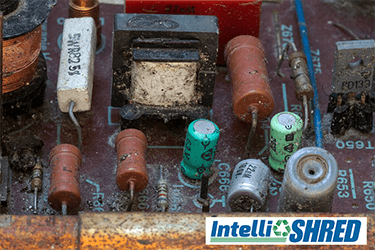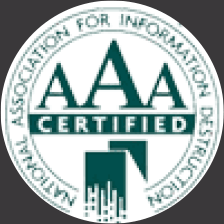
Proper Disposal Of E-Waste
Today, our environment is definitely in danger. The daily news is reporting on a daily basis that icebergs are melting, our air is highly polluted, and many animal species are now becoming extinct. In order to halt the unquestionable damage, it’s necessary that your organization tries to reduce its carbon footprint and reduce, reuse and recycle whenever it is possible.
Although there are various methods in which an organization should handle the proper disposal of e-waste, most experts agree that it should be recycled or destroyed in order to save the environment from further damage.
What exactly is E-waste?
E-waste is the term applied to old, outdated or broken electronic equipment that is no longer used. If it has a circuit board or chips, and you can plug an item into an electrical outlet it will probably be labeled as e-waste. The most common e-waste items include: computer monitors, printers, scanners, circuit boards, and cell phones. This year, the National Safety Council is predicting that 250 million computers will be obsolete in the next five years and cell phones will be discarded at a rate of 130 million per year.
In this type of electronic equipment, there are many dangerous chemicals like lead, cadmium, beryllium, mercury, and even brominated flame retardants. These hazardous materials have a high risk of polluting the air, contaminating soil, and ultimately getting into our drinking water supply.
Why is E-waste Harmful to the Environment?
It’s not common knowledge, but most electronic equipment actually contains heavy metals. If these metals are not disposed of properly, they will contaminate the environment. In the U.S., it’s illegal to just toss e-waste materials in a landfill. There are federal and state regulations which require e-waste to be either destroyed, recycled or disposed of safely.
What are the damaging effects of E-waste?
Typically, when e-waste is discarded in a landfill, rainwater flows through the landfill and picks up portions of the e-waste’s toxins. When the contaminated landfill water gets down to the liner of the landfill, it leaches through to the groundwater below and ultimately ends up in your glass. There are enormous health risks that people can experience from drinking contaminated water. They range from kidney disease and brain damage to genetic mutations and certain types of cancer.
How to Safely Recycle Your E-Waste
There are plenty of options for the proper disposal of e-waste. You’ll want to choose a certified e-waste recycler that is committed to safely and responsibly recycling electronics.
Usually, your local government, schools, and universities may also have additional responsible recycling options. Because e-waste has become such a large problem, government offices and schools have specific days on which you can bring unwanted electronics to a specific drop-off location. There are even retailers which have an effective in-store recycling program. These retailers have direct relationships with qualified, respected recycling companies that recycling e-waste is handled responsibly.
Without the proper disposal of e-waste, you may face an increased risk of workplace identity theft. Protecting business and personal information is easier than you think – IntelliShred is the expert shredding and destruction company you’re looking for. Contact us today for more information on our services.





